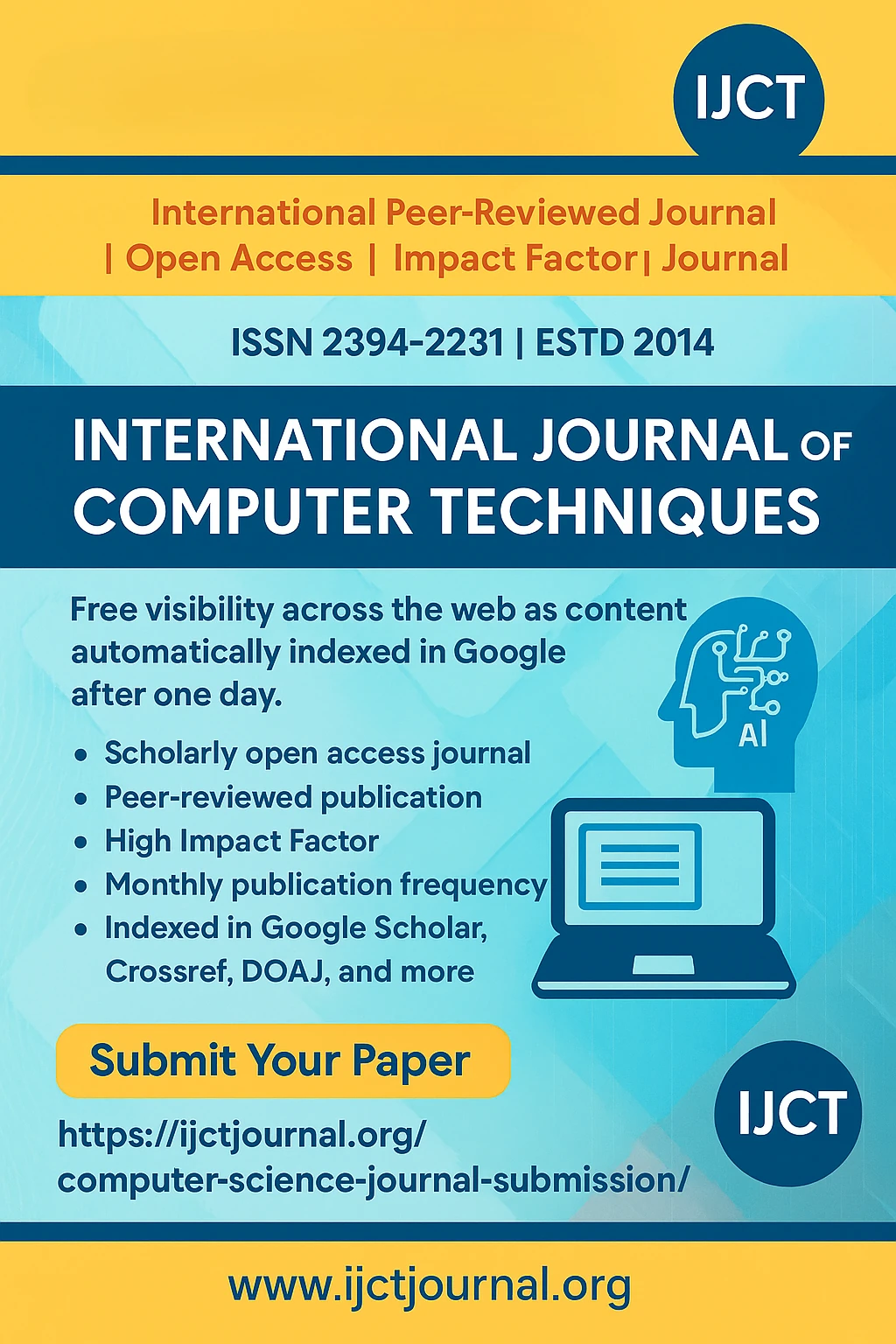
Impact of Geographical Location and Energy Sources on the Carbon Footprint of AI Models- A Survey-Based Study | IJCT Volume 12 – Issue 6 | IJCT-V12I6P4

International Journal of Computer Techniques
ISSN 2394-2231
Volume 12, Issue 6 | Published: November – December 2025
Author
Dipali Nanavare , Rubina Sheikh
Table of Contents
ToggleAbstract
Artificial Intelligence (Al) has become an indispensable technology driving automation, prediction, and optimization across industries.
However, the unprecedented computational demand of training and operating large Al models results in significant electricity consumption and greenhouse-gas emissions. This paper presents a comprehensive analysis of the carbon footprint of Al model development and deployment with particular attention to geographical location and energy-source variation.
A quantitative survey of eighty 80 respondents including students, professionals, and Al practitioners was conducted to evaluate awareness, energy usage respondents including students, professionals, and Al practitioners was conducted to evaluate awareness, energy-usage patterns, and sustainable practices. Statistical and visual analyses reveal that although 65% of respondents recognize Al’s environmental impact, only a small portion of organizations monitor emissions or rely on renewable energy.The work proposes a practical emission-
estimation formula. summarizes correlations among awareness ,traning durtion, and organizational monitorine, and outlines policy and technical recommendations for “Green AI.”
Keywords
Artificial Intelligence. Carbon Footprint, Green Al. Enerey Sources, Sustainability, Data CentersConclusion
The study concludes that Al’s environmental awareness is improving but practical mitigation remains limited. Integrating renewable energy into cloud infrastructures and optimizing model architectures can cut emissions substantially. Future research should develop carbon-aware schedulers, energy-efficiency benchmarks, and regional emission databases for Al systems Policymakers must incentivize data-center operators to disclose energy mixes and carbon data. Educating developers through sustainability curricula will be crucial for achieving Net-Zero Al by 2050.
References
[1) E. Strubell, A. Ganesh, A, McCallum, “Energy and Policy Considerations for Deep Learning in NLP.**
Proc.
ACL,
2019.
[2] P. Henderson et al., “Systematic Reporting of Energy and Carbon Footprints of Machine Learning.*
JMLR,
2020.
[3] Google Sustainability Report, “Carbon-Free Data
Centers,”
2023.
(4] T. Allen, “Sustainable Al: The Future of Green Computing,”
TEEE Green ICT,
2021.
[5] OpenAl, “Mitigating the Environmental Impact of Large Language Models,” Technical Blog.
2024.
(6) A. Chowdhury and V. Kumar, “Energy metries for neural network optimization,” IEHE Access, vol. 11, pp. 14621-14633, 2023.
7 d. Schwartz et al. “The Hidden Costs of Machine Learning: Energy and Carbon Footprint Analysis,” Nature Communications, vol. 14, no. 2.
2022.
181 A. Gupta and R. Singh, “Circen Computing: An Energy-Eilicient Approach Towards Sustainable IT.” International Journal of Advanced Computer Science
and
Application».
2021.
191M. Patterson, “The Efficiency of Data Centers Energy and Environmental
Considerations.”
ASHRAE Transactions, 2020
Journal Covers
IJCT Important Links
© 2025 International Journal of Computer Techniques (IJCT).













